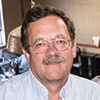One of the ways that companies like Sigma Design help clients adapt and thrive is by sparking innovation. By marrying proven technologies and techniques that exist in one industry with problems in another, solutions that are cost-effective and quick to implement can be realized.
Take 3D printing for example. It is not as new and revolutionary as the media makes it out to be. In fact, 3D printing has been around for decades. All the buzz is actually being caused by how manufacturers are embracing and repurposing the technology. Historically, 3D printers were used to create cosmetic prototypes and make models of parts that were later fabricated using conventional machining methods. Now 3D printing is being used to create functional products. We worked on an automation equipment project, an industry that typically uses conventional machining process, where our solution did not lend itself to those processes. The part was relatively complex making machining it virtually impossible and cost prohibitive. Instead, we used our 3D printer to “grow” the part. It was a quick and effective fix that saved our client precious time and money.
There are a wide variety of manufacturing processes as well that help companies innovate. One of our equipment clients was machining metal parts and ran into some issues. Leveraging lessons learned and practices adopted by many consumer electronics companies, we suggested that the part be molded out of an engineered plastic. This client was not familiar with the nuances of designing a part to be molded. The plastic molded parts ended up solving the technical issues and were more aesthetically pleasing and cost-effective, even though it was a relatively low-volume product.
Critical Parameter Management (CPM) is another manufacturing technique that is gaining popularity. CPM was initiated in the automotive sector and has infiltrated other industries. Engineers conduct a series of tests and analysis, and the basic premise is that a portion of a product design is found to be critical to the functionality of the product. This knowledge is especially helpful for high-volume manufacturing to maximize efficiency without sacrificing quality. Our engineering team used this technique to help a client improve an electronic device. CPM became a big factor in substantially reducing the number of product failures during the manufacturing process (which, in turn, saved the company significant amounts of money).
No matter what the technology or technique, the companies that adapt by thinking outside the box and that look to other industries for ideas are the ones that thrive. It is easy to succumb to the doomsday messages and stick your head in the dirt, but it is reaching out to subject matter experts in other design and manufacturing circles that will spur innovation. I believe that the key to innovation is to keep moving forward through adaptation and creativity.
Bill Huseby is the CEO of Sigma Design, a Vancouver-based product engineering firm.
{jathumbnail off}






